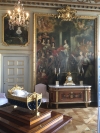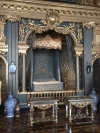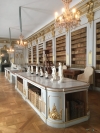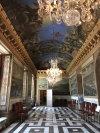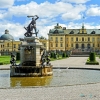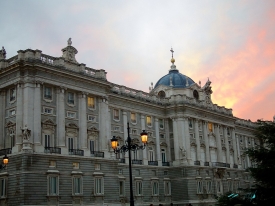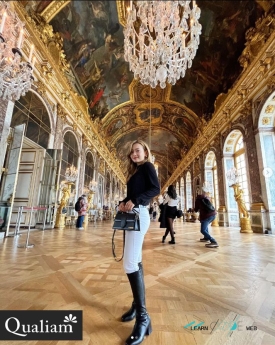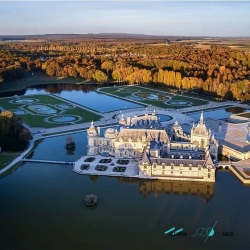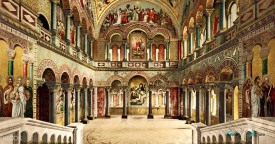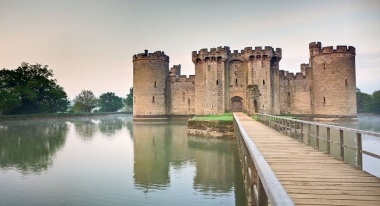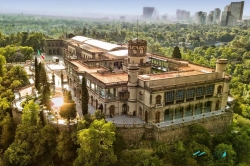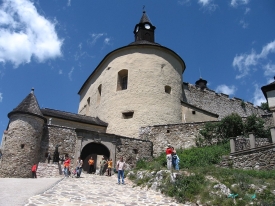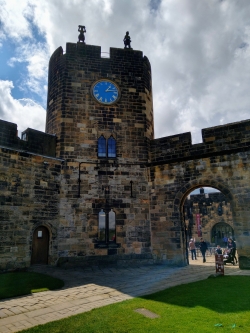ABOUT Drottningholm Palace
The Drottningholm Palace is the private residence of the Swedish royal family. It is located in Drottningholm. Built on the island Lovön (in Ekerö Municipality of Stockholm County), it is one of Sweden's Royal Palaces. It was originally built in the late 16th century, and it served as a regular summer residence of the Swedish royal court for most of the 18th century. Apart from being the private residence of the Swedish royal family, the palace is a popular tourist attraction.
The name Drottningholm (literally meaning "Queen's islet") came from the original renaissance building designed by Willem Boy, a stone palace built by John III of Sweden in 1580 for his queen, Catherine Jagiellon. This palace was preceded by a royal mansion called Torvesund.
The Queen Dowager Regent Hedwig Eleonora bought the castle in 1661, a year after her role as Queen of Sweden ended, but it burnt to the ground on 30 December that same year. Hedwig Eleonora engaged the architect Nicodemus Tessin the Elder to design and rebuild the castle. In 1662, work began on the reconstruction of the building. With the castle almost complete, Nicodemus died in 1681. His son Nicodemus Tessin the Younger continued his work and completed the elaborate interior designs. The Flemish sculptor Nicolaes Millich made for the great staircase and hall sculptures of the nine muses in marble, along with a series of busts of Gothic kings. In addition, he also made bust portraits of King Charles X Gustav, his wife Hedwig Eleonor and both their sons, the young King Charles XI, probably also of Magnus Gabriel De la Gardie and his wife Maria Euphrosyne, a sister of King Charles X Gustav. Millich and his assistant Burchard Precht also made decorative wood carvings in the queen dowager's bed chamber.
During the period of the reconstruction, Hedwig Eleonora was head of the regency for the still-underage King, Charles XI of Sweden, from 1660 to 1672. Sweden had grown to be a powerful country after the Peace of Westphalia. The position of the queen, essentially the ruler of Sweden, demanded an impressive residence located conveniently close to Stockholm.
During the reign of the kings Charles XI of Sweden and Charles XII of Sweden, the royal court was often present at the palace, which was used for hunting. Hedwig Eleonora used the palace as a summer residence until her death in 1715, also when she had become the undisputed host of the royal court during the absence of Charles XII in Great Northern War (1700–1721).
Drottningholm continued to serve regularly as a summer residence for the royal court during the entire 18th-century. After the death of Hedwig Eleonora in 1715, Queen Ulrika Eleonora of Sweden and King Frederick I of Sweden held court at the palace in the summer.
In 1744, the palace was given as a gift from King Frederick I to the then Crown Princess, later Queen of Sweden, Louisa Ulrika of Prussia when she married Adolf Frederick of Sweden, who became King of Sweden in 1751. During Louisa Ulrika's ownership of Drottningholm the interior of the palace was transformed into a more sophisticated French rococo style. Louisa Ulrika was also responsible for having the Drottningholm Palace Theatre rebuilt in a grand style after the more modest original building burnt down in 1762. Louisa Ulrika and Adolf Fredrick continued to reside at the palace during their reign (1751–1771). In 1777, Louisa Ulrika sold Drottningholm to the Swedish state.
While it was owned by the Swedish state, the palace was used by King Gustav III of Sweden, son of Louisa Ulrika, as a summer residence, and a grand ceremonial court life was performed at the palace, which is considered to have been a great age for the palace, during which it was known for the elaborate masquerades and grand theatrical festivities and tournaments performed in the gardens. During the reign of Gustav IV Adolf of Sweden (reign 1792–1809) and Charles XIII of Sweden (reign 1809–1818) the palace was gradually used more sporadically. In 1797, it was the place of the great festivities when the King's bride, Frederica of Baden, was received there upon her arrival in Sweden, during which the last so called carousel, or tournament, was staged in the palace garden. After the Coup of 1809, the deposed Gustav IV Adolf was kept here under guard in the Chinese Drawing Room for eleven days.
The name Drottningholm (literally meaning "Queen's islet") came from the original renaissance building designed by Willem Boy, a stone palace built by John III of Sweden in 1580 for his queen, Catherine Jagiellon. This palace was preceded by a royal mansion called Torvesund.
The Queen Dowager Regent Hedwig Eleonora bought the castle in 1661, a year after her role as Queen of Sweden ended, but it burnt to the ground on 30 December that same year. Hedwig Eleonora engaged the architect Nicodemus Tessin the Elder to design and rebuild the castle. In 1662, work began on the reconstruction of the building. With the castle almost complete, Nicodemus died in 1681. His son Nicodemus Tessin the Younger continued his work and completed the elaborate interior designs. The Flemish sculptor Nicolaes Millich made for the great staircase and hall sculptures of the nine muses in marble, along with a series of busts of Gothic kings. In addition, he also made bust portraits of King Charles X Gustav, his wife Hedwig Eleonor and both their sons, the young King Charles XI, probably also of Magnus Gabriel De la Gardie and his wife Maria Euphrosyne, a sister of King Charles X Gustav. Millich and his assistant Burchard Precht also made decorative wood carvings in the queen dowager's bed chamber.
During the period of the reconstruction, Hedwig Eleonora was head of the regency for the still-underage King, Charles XI of Sweden, from 1660 to 1672. Sweden had grown to be a powerful country after the Peace of Westphalia. The position of the queen, essentially the ruler of Sweden, demanded an impressive residence located conveniently close to Stockholm.
During the reign of the kings Charles XI of Sweden and Charles XII of Sweden, the royal court was often present at the palace, which was used for hunting. Hedwig Eleonora used the palace as a summer residence until her death in 1715, also when she had become the undisputed host of the royal court during the absence of Charles XII in Great Northern War (1700–1721).
Drottningholm continued to serve regularly as a summer residence for the royal court during the entire 18th-century. After the death of Hedwig Eleonora in 1715, Queen Ulrika Eleonora of Sweden and King Frederick I of Sweden held court at the palace in the summer.
In 1744, the palace was given as a gift from King Frederick I to the then Crown Princess, later Queen of Sweden, Louisa Ulrika of Prussia when she married Adolf Frederick of Sweden, who became King of Sweden in 1751. During Louisa Ulrika's ownership of Drottningholm the interior of the palace was transformed into a more sophisticated French rococo style. Louisa Ulrika was also responsible for having the Drottningholm Palace Theatre rebuilt in a grand style after the more modest original building burnt down in 1762. Louisa Ulrika and Adolf Fredrick continued to reside at the palace during their reign (1751–1771). In 1777, Louisa Ulrika sold Drottningholm to the Swedish state.
While it was owned by the Swedish state, the palace was used by King Gustav III of Sweden, son of Louisa Ulrika, as a summer residence, and a grand ceremonial court life was performed at the palace, which is considered to have been a great age for the palace, during which it was known for the elaborate masquerades and grand theatrical festivities and tournaments performed in the gardens. During the reign of Gustav IV Adolf of Sweden (reign 1792–1809) and Charles XIII of Sweden (reign 1809–1818) the palace was gradually used more sporadically. In 1797, it was the place of the great festivities when the King's bride, Frederica of Baden, was received there upon her arrival in Sweden, during which the last so called carousel, or tournament, was staged in the palace garden. After the Coup of 1809, the deposed Gustav IV Adolf was kept here under guard in the Chinese Drawing Room for eleven days.









